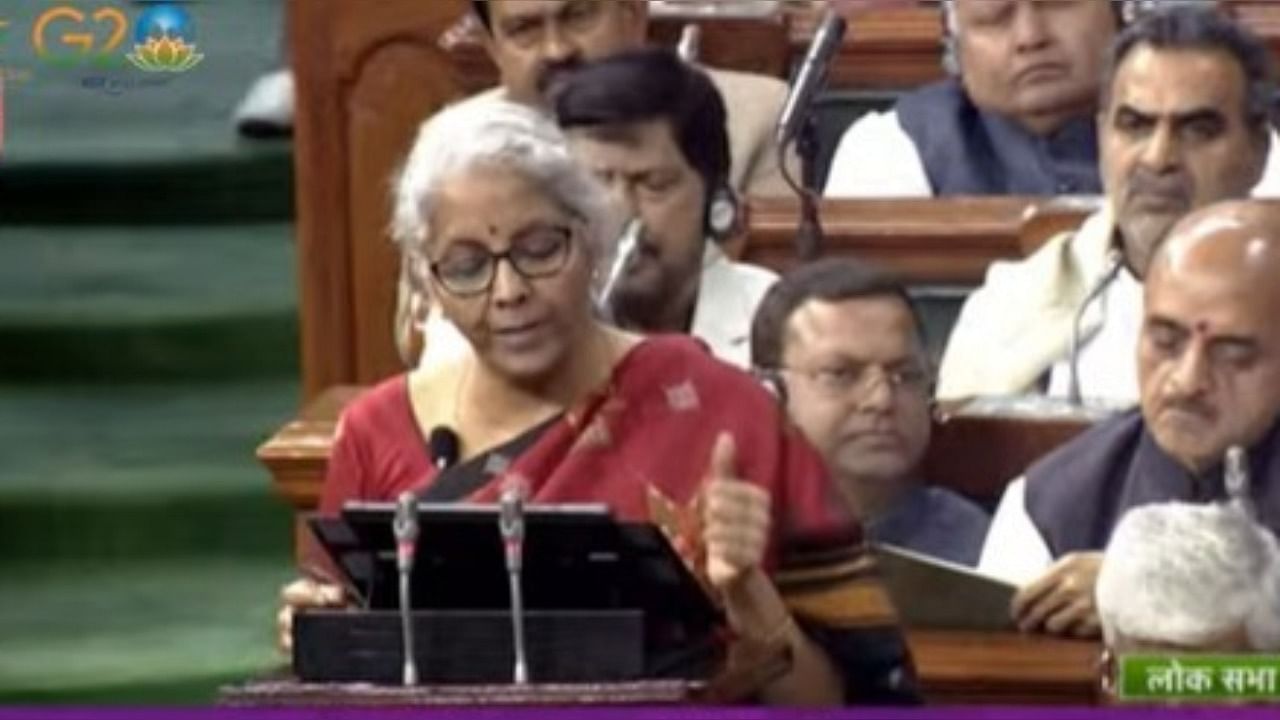
In its last full Budget ahead of the 2024 general elections, Prime Minister Narendra Modi’s government cut personal income taxes to appease the middle class and spur consumption, and boosted infrastructure spending to power growth and job creation in Asia's No.3 economy.
The Budget also unveiled sops for farmers, tribals and women, even as it cut outlay for the rural job scheme and subsidies in order to maintain fiscal discipline targets.
The adjustments in the income tax slabs “is likely to boost consumption and savings in the economy, benefitting taxpayers, particularly at the lower brackets of the income pyramid”, said Abheek Barua, Chief Economist and Executive Vice President, HDFC Bank.
The Budget also recognised that the government would have to continue playing the lead role in driving investments in the economy given the rising global risks and only a nascent recovery in the private sector spending cycle, Barua added.
While the Indian government raised its capital investment outlay by 33% to Rs 10 lakh crore for 2023-24, it also paid attention to the need for fiscal discipline in a bid to boost the country’s credit rating.
It cut India’s fiscal deficit target to 5.9% of GDP in 2023-24 from 6.4% in 2022-23. The resultant lower-than-expected market borrowing number is likely to bring some relief for the bond market.
All about taxes
The exemption limit under the ‘new tax regime’, which was introduced in 2020, has been increased by Rs 50,000 to Rs 3 lakh. Tax rebates have also been increased and tax slabs have been rejigged in order to make the new tax regime more attractive.
On Wednesday, Finance Minister Nirmala Sitharaman also proposed to increase tax rebates and exemption limits under the new regime. Persons in the new tax regime with annual income up to Rs 7 lakh will not have to pay any tax.
Currently, a person with annual income of up to Rs 5 lakh is not required to pay any tax in the old as well as the new regimes.
Sitharaman said the proposed changes “will provide major relief to all taxpayers in the new regime”.
An individual with an annual income of Rs 9 lakh will be required to pay only Rs 45,000. This is only 5 per cent of his or her income. It is a reduction of 25 per cent on what he or she is required to pay now, i.e, Rs 60,000. Similarly, an individual with an income of Rs 15 lakh would be required to pay only Rs 1.5 lakh or 10 per cent of his or her income, a reduction of 20 per cent from the existing liability of Rs 1,87,500.
Infra spending
The finance minister announced a steep hike in capital expenditure and the biggest-ever outlay for railways. The new capital investment outlay is around 3.3 per cent of GDP, almost three times the figure in 2019-20.
The government allocated Rs 2.40 lakh crore for railways. That is about 9 times the outlay made in 2013-14.
To finance the fiscal deficit in 2023-24, the net market borrowings from dated securities are estimated at Rs 11.8 lakh crore. The balance financing is expected to come from small savings and other sources. The gross market borrowings are estimated at Rs15.4 lakh crore.
In Budget Estimates 2023-24, the total receipts other than borrowings and the total expenditure are estimated at Rs 27.2 lakh crore and Rs 45 lakh crore respectively. The net tax receipts are estimated at Rs 23.3 lakh crore.